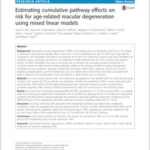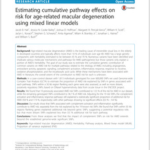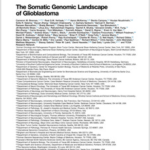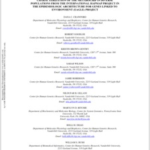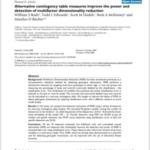Age-related macular degeneration (AMD) is the leading cause of irreversible visual loss in the elderly in developed countries and typically affects more than 10% of individuals over age 80. AMD has a large genetic component, with heritability estimated to be between 45% and 70%. Numerous variants have been identified and implicate various molecular mechanisms and […]
Tag Archives: Gene Regulatory Networks
Estimating cumulative pathway effects on risk for age-related macular degeneration using mixed linear models.
Hall JB, Cooke Bailey JN, Hoffman JD, Pericak-Vance MA, Scott WK, Kovach JL, Schwartz SG, Agarwal A, Brantley MA, Haines JL, Bush WS,. Age-related macular degeneration (AMD) is the leading cause of irreversible visual loss in the elderly in developed countries and typically affects more than 10% of individuals over age 80. AMD has a […]
Estimating cumulative pathway effects on risk for age-related macular degeneration using mixed linear models.
Age-related macular degeneration (AMD) is the leading cause of irreversible visual loss in the elderly in developed countries and typically affects more than 10% of individuals over age 80. AMD has a large genetic component, with heritability estimated to be between 45% and 70%. Numerous variants have been identified and implicate various molecular mechanisms and […]
Estimating cumulative pathway effects on risk for age-related macular degeneration using mixed linear models.
Hall JB, Cooke Bailey JN, Hoffman JD, Pericak-Vance MA, Scott WK, Kovach JL, Schwartz SG, Agarwal A, Brantley MA, Haines JL, Bush WS,. Age-related macular degeneration (AMD) is the leading cause of irreversible visual loss in the elderly in developed countries and typically affects more than 10% of individuals over age 80. AMD has a […]
The somatic genomic landscape of glioblastoma.
We describe the landscape of somatic genomic alterations based on multidimensional and comprehensive characterization of more than 500 glioblastoma tumors (GBMs). We identify several novel mutated genes as well as complex rearrangements of signature receptors, including EGFR and PDGFRA. TERT promoter mutations are shown to correlate with elevated mRNA expression, supporting a role in telomerase […]
The somatic genomic landscape of glioblastoma.
Brennan CW, Verhaak RG, McKenna A, Campos B, Noushmehr H, Salama SR, Zheng S, Chakravarty D, Sanborn JZ, Berman SH, Beroukhim R, Bernard B, Wu CJ, Genovese G, Shmulevich I, Barnholtz-Sloan J, Zou L, Vegesna R, Shukla SA, Ciriello G, Yung WK, Zhang W, Sougnez C, Mikkelsen T, Aldape K, Bigner DD, Van Meir EG, […]
Characterization of the Metabochip in diverse populations from the International HapMap Project in the Epidemiologic Architecture for Genes Linked to Environment (EAGLE) project.
Genome-wide association studies (GWAS) have identified hundreds of genomic regions associated with common human disease and quantitative traits. A major research avenue for mature genotype-phenotype associations is the identification of the true risk or functional variant for downstream molecular studies or personalized medicine applications. As part of the Population Architecture using Genomics and Epidemiology (PAGE) […]
Characterization of the Metabochip in diverse populations from the International HapMap Project in the Epidemiologic Architecture for Genes Linked to Environment (EAGLE) project.
Crawford DC, Goodloe R, Brown-Gentry K, Wilson S, Roberson J, Gillani NB, Ritchie MD, Dilks HH, Bush WS,. Genome-wide association studies (GWAS) have identified hundreds of genomic regions associated with common human disease and quantitative traits. A major research avenue for mature genotype-phenotype associations is the identification of the true risk or functional variant for […]
Alternative contingency table measures improve the power and detection of multifactor dimensionality reduction.
Multifactor Dimensionality Reduction (MDR) has been introduced previously as a non-parametric statistical method for detecting gene-gene interactions. MDR performs a dimensional reduction by assigning multi-locus genotypes to either high- or low-risk groups and measuring the percentage of cases and controls incorrectly labelled by this classification – the classification error. The combination of variables that produces […]
Alternative contingency table measures improve the power and detection of multifactor dimensionality reduction.
Bush WS, Edwards TL, Dudek SM, McKinney BA, Ritchie MD,. Multifactor Dimensionality Reduction (MDR) has been introduced previously as a non-parametric statistical method for detecting gene-gene interactions. MDR performs a dimensional reduction by assigning multi-locus genotypes to either high- or low-risk groups and measuring the percentage of cases and controls incorrectly labelled by this classification […]


